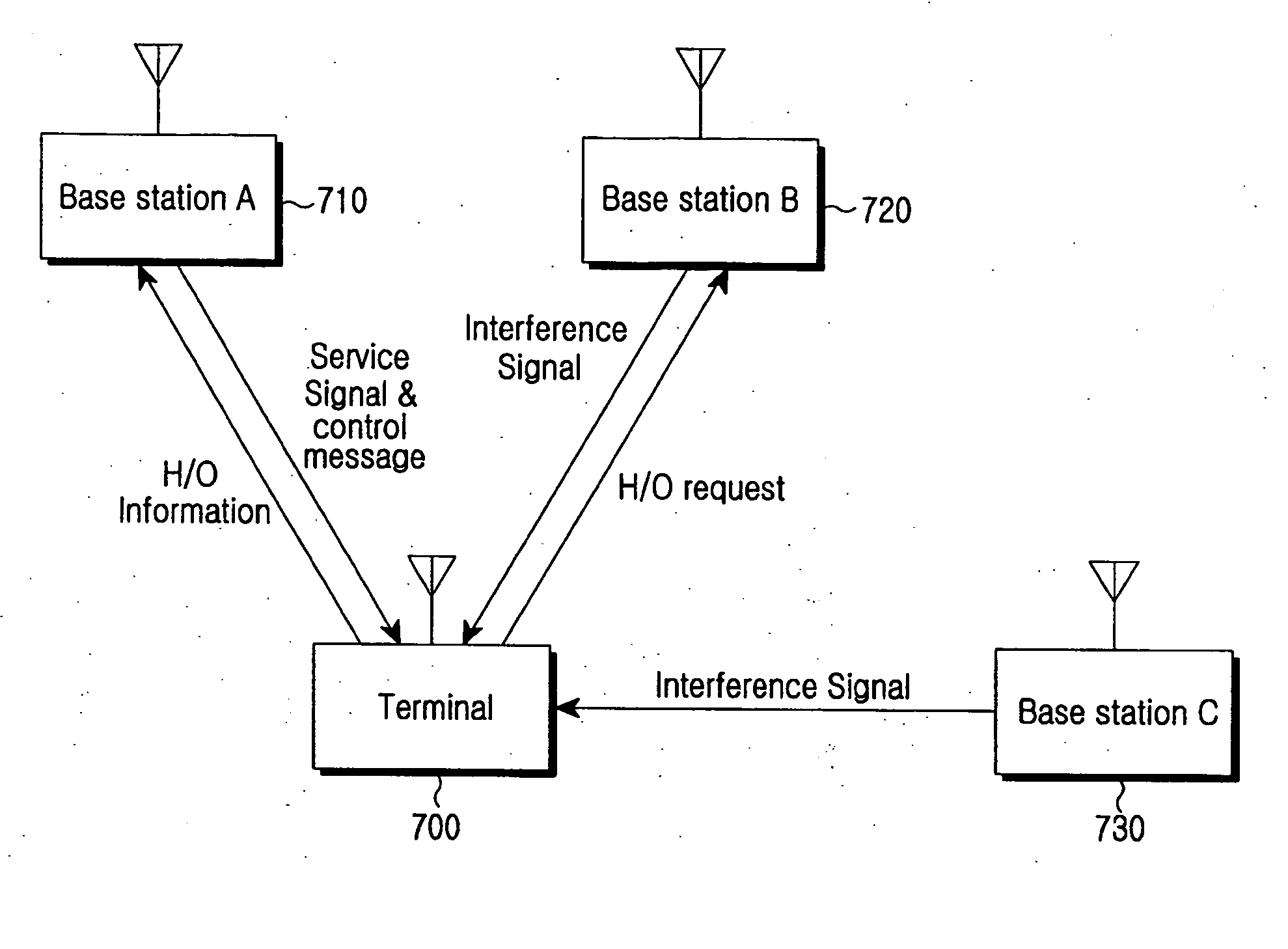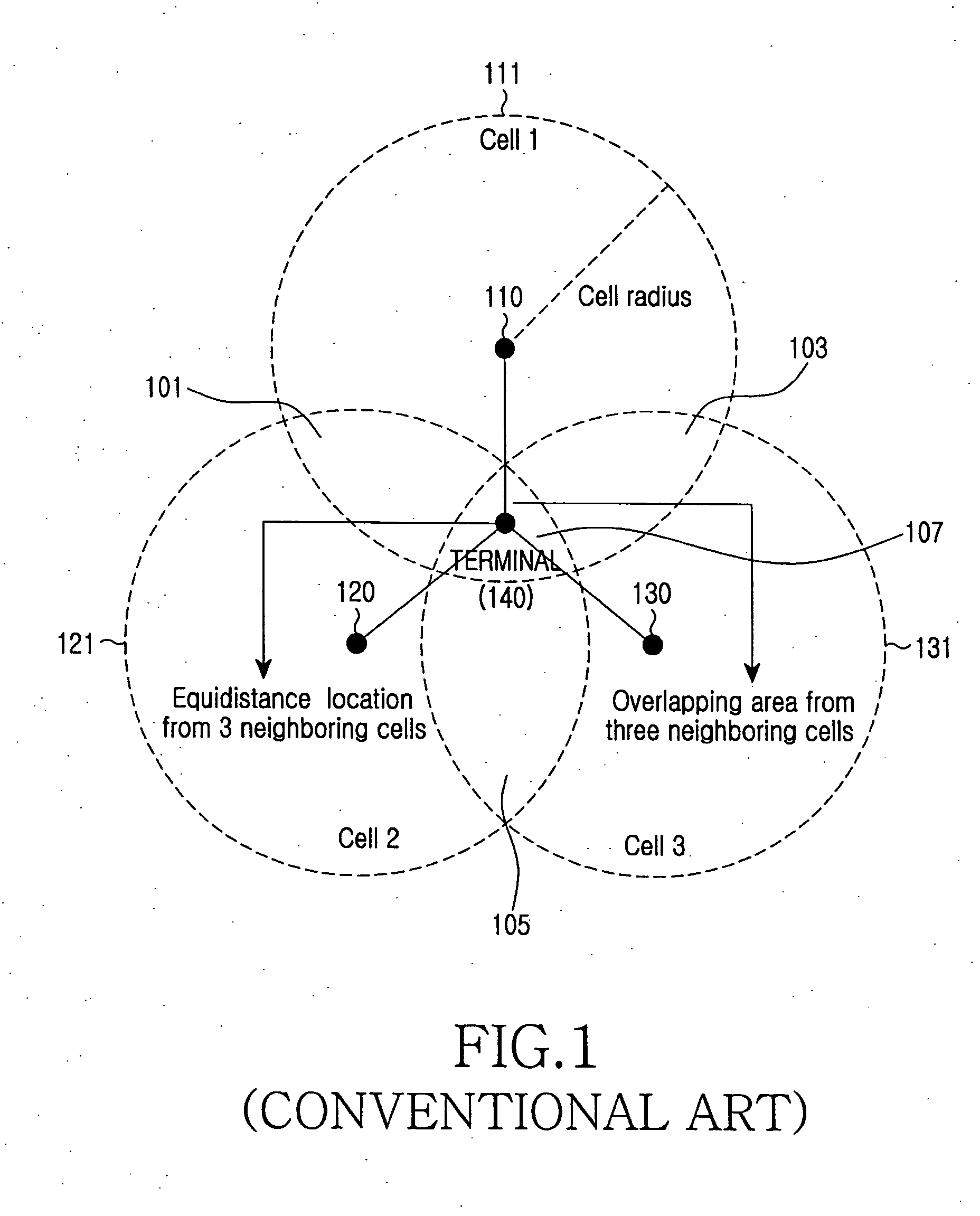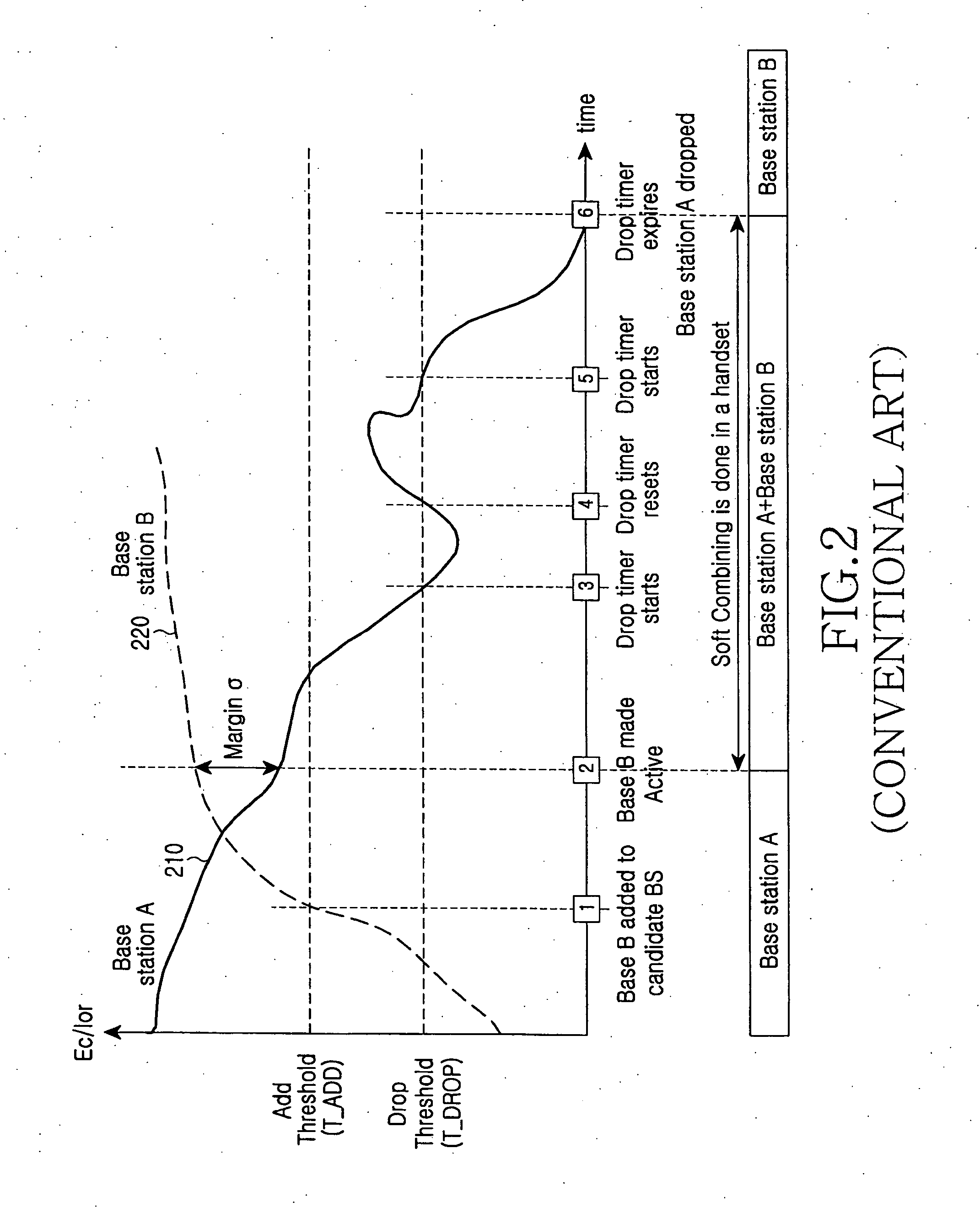Apparatus and method for hard handover in a wireless communication system
a wireless communication system and wireless communication technology, applied in the direction of electrical equipment, wireless commuication services, transmission monitoring, etc., can solve the problems of terminals not receiving signals, cdma mobile communication system has almost reached its limit in providing higher-speed data services, and may experience a decrease in reception performance, so as to achieve the effect of safe transmission of control signals
- Summary
- Abstract
- Description
- Claims
- Application Information
AI Technical Summary
Benefits of technology
Problems solved by technology
Method used
Image
Examples
Embodiment Construction
[0087] The matters defined in the description such as a detailed construction and elements are provided to assist in a comprehensive understanding of the embodiments of the invention and are merely exemplary. Accordingly, those of ordinary skill in the art will recognize that various changes and modifications of the exemplary embodiments described herein can be made without departing from the scope and spirit of the invention. Also, descriptions of well-known functions and constructions are omitted for clarity and conciseness.
[0088] Exemplary embodiments of the present invention propose a hard handover method. The hard handover proposed in the exemplary embodiments of the present invention is active handover, and the active handover method actively performs hard handover. Exemplary embodiments of the present invention propose a handover scheme for the system that uses an interference cancellation scheme in an FRP / FRF=1 environment. For that purpose, exemplary embodiments of the pre...
PUM
 Login to View More
Login to View More Abstract
Description
Claims
Application Information
 Login to View More
Login to View More - R&D
- Intellectual Property
- Life Sciences
- Materials
- Tech Scout
- Unparalleled Data Quality
- Higher Quality Content
- 60% Fewer Hallucinations
Browse by: Latest US Patents, China's latest patents, Technical Efficacy Thesaurus, Application Domain, Technology Topic, Popular Technical Reports.
© 2025 PatSnap. All rights reserved.Legal|Privacy policy|Modern Slavery Act Transparency Statement|Sitemap|About US| Contact US: help@patsnap.com



